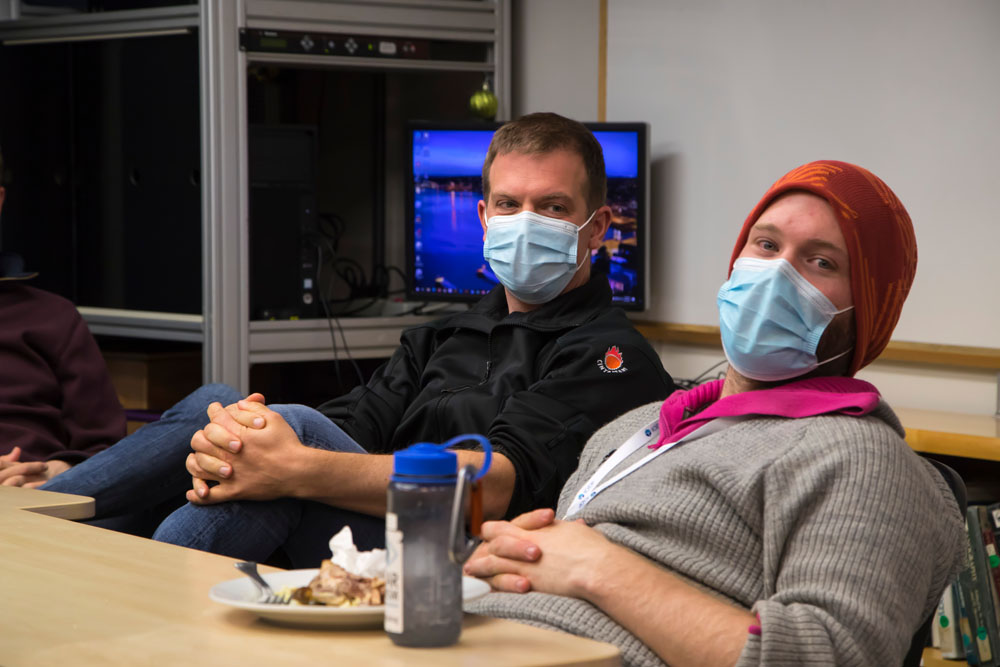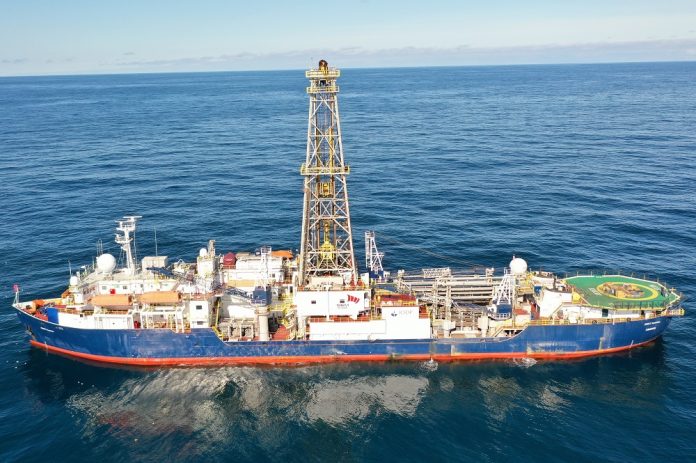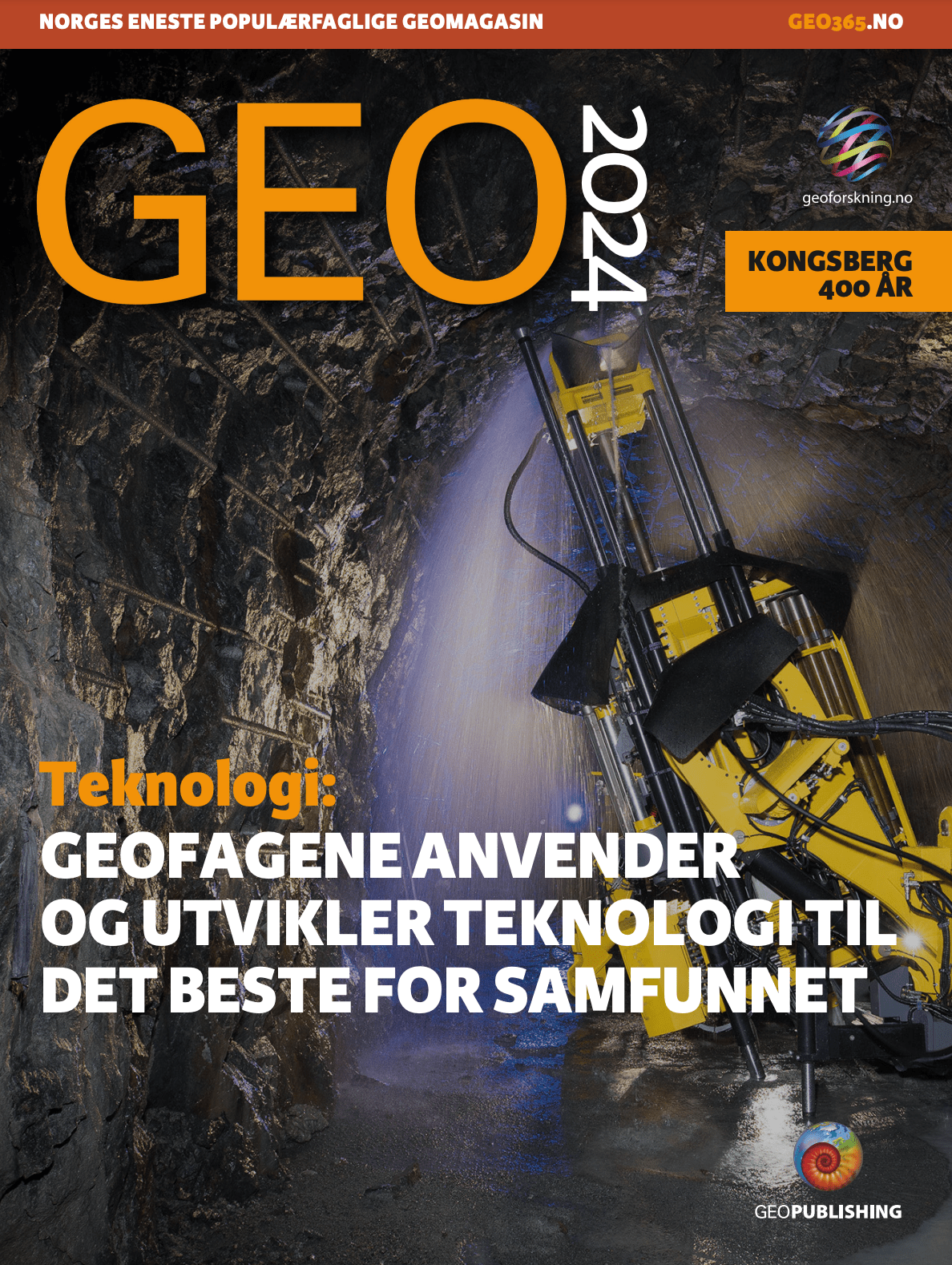A global warming event 56 million years ago was likely caused by a large release of CO2 to the atmosphere. Was widespread volcanism in the North Atlantic the source?
The JOIDES Resolution on location at Site U1566 during calm weather on the 16th August 2021. Photo: Peter Betlem
A dramatic global warming event happened 56 million years ago, in the middle of a long time period with a warm climate and no ice at either pole. The Earth climate system then saw a 4–5 °C warming during the so-called Paleocene–Eocene Thermal Maximum (PETM). It lasted for nearly 200,000 years.
The PETM is considered one of the best natural analogues for current environmental change in response to human activity. Understanding why the PETM occurred and how the Earth responded is potentially valuable knowledge for combatting current global warming.
Many sediments worldwide that were deposited during the PETM show large disruptions to the carbon cycle, all pointing to a large release of CO2 to the atmosphere.
However, there is still some uncertainty as to which source(s) of CO2 caused the PETM. Potential candidates include the release of seafloor methane, high levels of volcanic activity in the North Atlantic, and even possibly a meteorite impact.
The continental breakup of Greenland from Eurasia was accompanied by huge levels of magmatism, which produced thick lava plateaus several km-thick that are presently found in Greenland and the Faroes. Widespread subsurface igneous layers (called sills) were also forcefully intruded into sedimentary basins along the Norwegian margin.
The magmatic event is known as the North Atlantic Igneous Province (NAIP). More than 5 million cubic kilometres of magma were formed in less than a few million years.
The volume is large enough to cover Norway with a 10 km thick lava pile. The gases released by the volcanoes and the sediments heated by the sills would have been considerable, and potentially sufficiently voluminous to trigger the PETM.
READ ALSO: Drilling into old lava and Daily updates from the ship
One of the primary objectives of the International Ocean Discovery Program (IODP) Expedition 396 is to understand the importance of the North Atlantic volcanism as a driving force for climatic changes observed during the Paleocene and Eocene.
We are currently drilling sediments and basalts in the Vøring Basin offshore mid-Norway to recover rocks and proxy data to describe the PETM and to test the hypothesis that the magmatism offshore Norway triggered this global warming event.
The Expedition 396 consists of a crew of almost 100 scientists, technicians, and sailors. The drilling vessel is more than 45 years old, but is equipped with impressive modern laboratories for physical, geological and geochemical analyses of the drill cores.
The data collected during the next two months will form the basis for years of post-cruise research to understand the temperature changes across the Paleocene – Eocene boundary.
 CEED researcher Morgan Jones (left) and Peter Betlem (UNIS, UiO and NCCS). Photo: Sandra Herrmann, IODP JRSO
CEED researcher Morgan Jones (left) and Peter Betlem (UNIS, UiO and NCCS). Photo: Sandra Herrmann, IODP JRSO
 Co-Chief Scientist Sverre Planke (VBPR/UiO, in front) and micropalaeontologist Henk Brinkhuis (NIOZ) in the background during a pre-site meeting. Photo: Sandra Herrmann, IODP JRSO
Co-Chief Scientist Sverre Planke (VBPR/UiO, in front) and micropalaeontologist Henk Brinkhuis (NIOZ) in the background during a pre-site meeting. Photo: Sandra Herrmann, IODP JRSO



